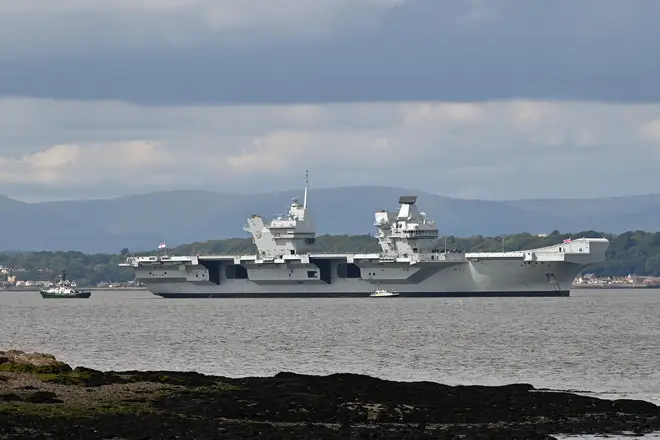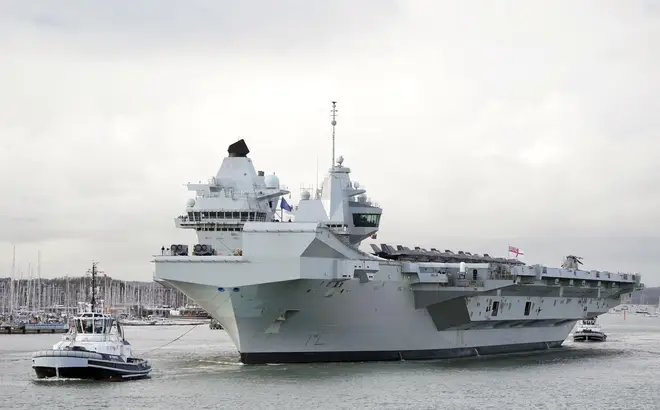
Iain Dale 10am - 1pm
11 February 2024, 21:29 | Updated: 11 February 2024, 21:31

A £3 billion aircraft carrier due to replace another ship which suffered a fault before it was due to take part in Nato exercises has mysterious pulled out of the war games.
The high-tech HMS Prince of Wales was due to replace HMS Queen Elizabeth in Exercise Steadfaster Defender – the largest Nato war games since the Cold War.
The Ministry of Defence says that the Portsmouth-moored warship had “postponed” its departure - the latest setback for a military under scrutiny.
Hundreds lined the streets to see it depart the Hampshire city – but the ship failed to make its 12.15pm departure time.
HMS Queen Elizabeth aircraft carrier suffered a malfunction last week which forced it to pull out of the exercises.
The carrier, which deploys advanced F-35 stealth jets, was meant to lead the alliance's largest exercise since the Cold War.
The Royal Navy said on X: "Routine pre-sailing checks yesterday identified an issue with a coupling on @HMSQNLZ starboard propeller shaft. As such, the ship will not sail on Sunday.
"@HMSPWLS will take her place on Nato duties and will set sail for Exercise Steadfast Defender as soon as possible."
But it is only 18 months on from the Prince of Wales suffering a propeller malfunction.
It broke down en route to a diplomatic mission to carry out exercise with the US and Canada.
Routine pre-sailing checks yesterday identified an issue with a coupling on @HMSQNLZ starboard propeller shaft. As such, the ship will not sail on Sunday.@HMSPWLS will take her place on NATO duties and will set sail for Exercise Steadfast Defender as soon as possible. pic.twitter.com/ImAeTU80vi
— Royal Navy (@RoyalNavy) February 3, 2024
Critics blast the carriers as expensive projects that have eaten up the defence budget, and would be vulnerable to drone attacks and hypersonic missiles.
Supporters say a carrier strike capability is indispensable for a major power, allowing Britain to hit targets globally and project power, and that carriers would be protected by advanced warships.
But those voices in support are not helped by malfunctions - nor the appearance of both carriers in the dock at Portsmouth instead of joining the USS Eisenhower carrier in striking back at Houthis.
Britain combined with the US again in attacking Houthi sites overnight. But it launched jets from Cyprus, where the UK has major bases.

Just days ago, defence minister James Heappey said one of the carriers could be deployed.
"Our judgement was that with the Ike on station – the Eisenhower on station – and with jets available from Akrotiri, that we were able to meet the challenge as it is now," he said.
"That's not to say that when the Eisenhower goes home, if we were needed to plug a gap in US deployments, or if the situation deteriorates and we need more, that we wouldn't [send a carrier]."
More than 30 targets were hit across three locations, with three struck by RAF Typhoon jets.
Foreign secretary Lord David Cameron said: "The UK and the US have carried out further strikes on Houthi military targets.
"We have issued repeated warnings to the Houthis. Their reckless actions are putting innocent lives at risk, threatening the freedom of navigation and destabilising the region.
"The Houthi attacks must stop."
Britain has also been accused of being unprepared to fight, with troops not sufficiently trained for war and stockpiles at low levels.